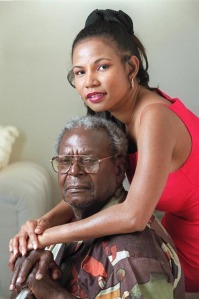The Bechdel Test (1985) says that a film is not worth watching unless it fulfils three conditions:
- It has to have at least two women who
- talk to each other about
- something besides a man
It comes from Allison Bechdel’s comic strip “Dykes to Watch Out For”. She in turn got it from Liz Wallace at her karate class.
It can apply to any story but Hollywood fails the test at a surprising rate, even now more than 20 years later.
NPR did a piece on the Bechdel Test a year ago. In it Eric Deggans, who writes about television for the St Petersburg Times, gave his own form of the Bechdel Test for race:
- At least two non-white characters in the main cast …
- in a show that’s not about race.
I did not know about the Bechdel Test till I read about it in Alaya Dawn Johnson’s post yesterday at the Angry Black Woman, but even I had something like it in my head:
- At least two black characters
- who are not stereotypes
- whose love lives we know about and
- who have their own storyline
“The Secret Life of Bees” would pass (the storylines of Alicia Keys and Sophie Okonedo), while the “Imitation of Life” would not (black characters are stereotypes).
Johnson gives the strict form of the Bechdel Test for race:
- It has to have two people of colour in it.
- Who talk to each other.
- About something other than a white person.
Like Deggans, I would add that talking about race would be, in effect, talking about white people.
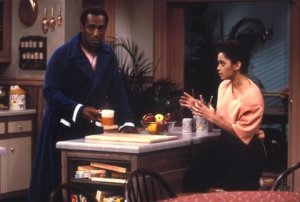 Johnson says most shows fail, though “Battlestar Galactica”, “True Blood”, “Grey’s Anatomy” and “Veronica Mars” pass.
Johnson says most shows fail, though “Battlestar Galactica”, “True Blood”, “Grey’s Anatomy” and “Veronica Mars” pass.
A show can pass the Bechdel Test and still be racist – and, likewise, it can fail and yet not be particularly racist at all. But it is a quick way of separating those that probably are racist from those that probably are not. And, more importantly, it gives you a way of thinking about stories and how white male they are in their point of view.
Deggans says that most shows fail the Bechdel Test because most successful television writers are white men. They just do not know what women or blacks talk about when they are not there.
Jennifer Kesler at The Hathor Legacy says it is worse than that: when she was learning to write for Hollywood they told her, in so many words, to fail the Bechdel Test: main characters should be white men and no one cares what women (or presumably blacks or anyone else) talk about unless it is about the main characters – who are white men!
But why? Because the white men who run Hollywood say it is what the “target audience” wants. But just what is this target audience? Kesler says in their minds it turns out to be “a construct based on partial truths and twisted math – to perpetuate their own desires”.
See also:
- racialbechdel.tumblr.com – a blog that reviews film, television and video games according to a racial Bechdel Test.
- Kesler: Why film schools teach screenwriters not to pass the Bechdel test
- Alaya Dawn Johnson: The Bechdel Test and Race in Popular Fiction
- The blackness of American television
- Hollywood
- white gaze
- black actresses
- If blacks ran Hollywood like whites do
- stereotype
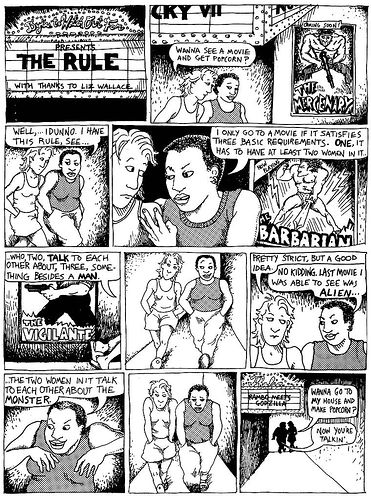

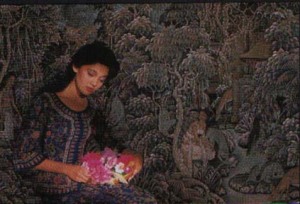




 The police are those who are charged with protecting citizens from crime. They can arrest those suspected of breaking the law and put them in jail. They carry out court decisions. They are allowed to use violence, even deadly force, to keep the peace and preserve public safety. They maintain law and order.
The police are those who are charged with protecting citizens from crime. They can arrest those suspected of breaking the law and put them in jail. They carry out court decisions. They are allowed to use violence, even deadly force, to keep the peace and preserve public safety. They maintain law and order.
 June Jordan (1936-2002) was an American writer, poet and professor. And one of my favourite authors. By the 1990s she had become one of the top black women writers in the country. She was best known as a poet, though she wrote children’s books and essays too.
June Jordan (1936-2002) was an American writer, poet and professor. And one of my favourite authors. By the 1990s she had become one of the top black women writers in the country. She was best known as a poet, though she wrote children’s books and essays too.

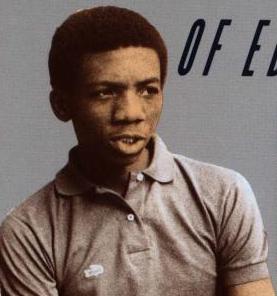 Edmund Perry (c. 1968-1985), a 17-year-old black boy, was shot dead on June 12th 1985 by Lee Van Houten, a white plainclothes policeman, a few blocks from where Perry lived on West 114th Street in Harlem. The New York Times does not ordinarily report murder north of 96th Street, but this time they did: Perry, it turned out, had just graduated from Exeter, one of the top private schools in America, and was set to go to Stanford University.
Edmund Perry (c. 1968-1985), a 17-year-old black boy, was shot dead on June 12th 1985 by Lee Van Houten, a white plainclothes policeman, a few blocks from where Perry lived on West 114th Street in Harlem. The New York Times does not ordinarily report murder north of 96th Street, but this time they did: Perry, it turned out, had just graduated from Exeter, one of the top private schools in America, and was set to go to Stanford University.
